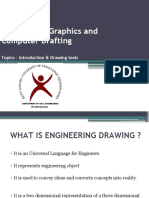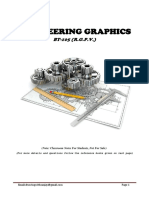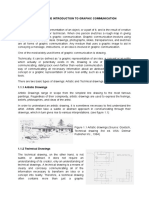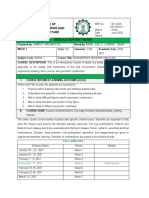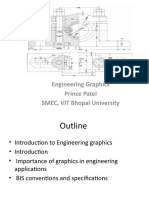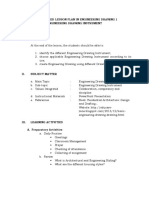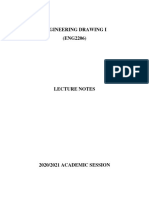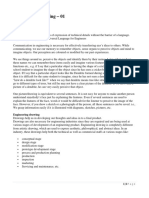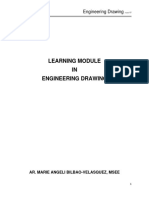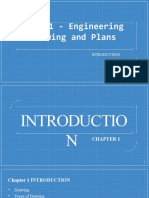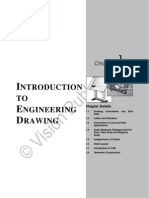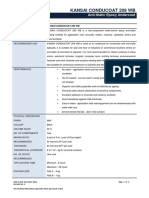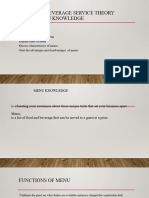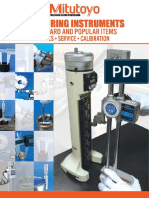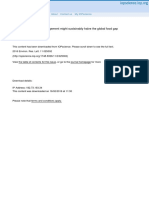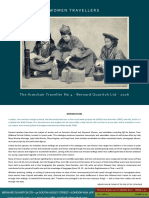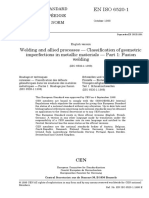0% found this document useful (0 votes)
33 views41 pagesEngineering Drawing Basics
The document provides an introduction to engineering drawing, covering topics such as drawing instruments, types of projections, and the design process. It emphasizes the importance of engineering drawing as a communication tool in manufacturing and engineering fields. Additionally, it outlines the standards and regulations governing engineering drawings to ensure accuracy and quality.
Uploaded by
ajeboriogbonusman04Copyright
© © All Rights Reserved
We take content rights seriously. If you suspect this is your content, claim it here.
Available Formats
Download as PDF, TXT or read online on Scribd
0% found this document useful (0 votes)
33 views41 pagesEngineering Drawing Basics
The document provides an introduction to engineering drawing, covering topics such as drawing instruments, types of projections, and the design process. It emphasizes the importance of engineering drawing as a communication tool in manufacturing and engineering fields. Additionally, it outlines the standards and regulations governing engineering drawings to ensure accuracy and quality.
Uploaded by
ajeboriogbonusman04Copyright
© © All Rights Reserved
We take content rights seriously. If you suspect this is your content, claim it here.
Available Formats
Download as PDF, TXT or read online on Scribd
/ 41



